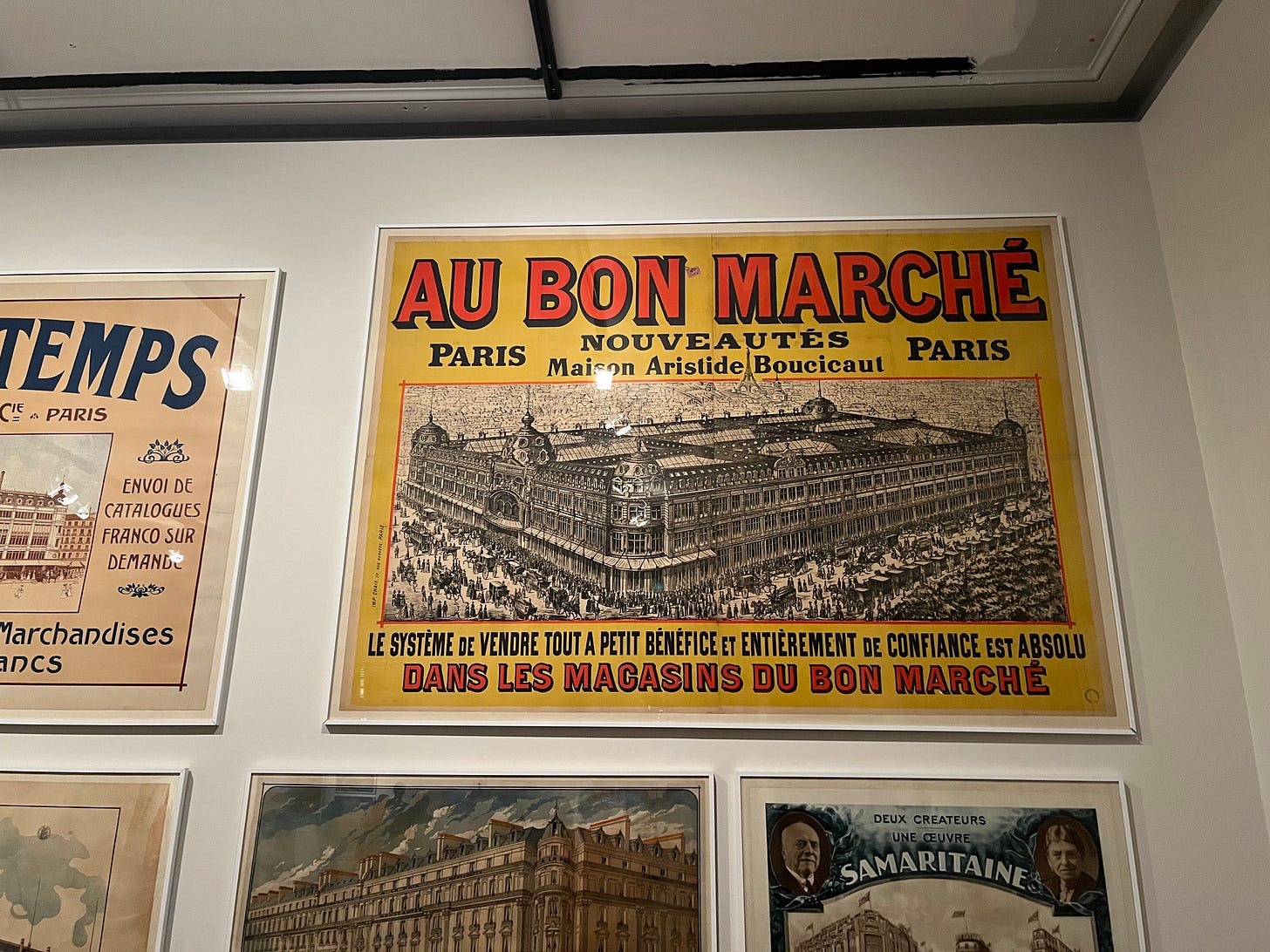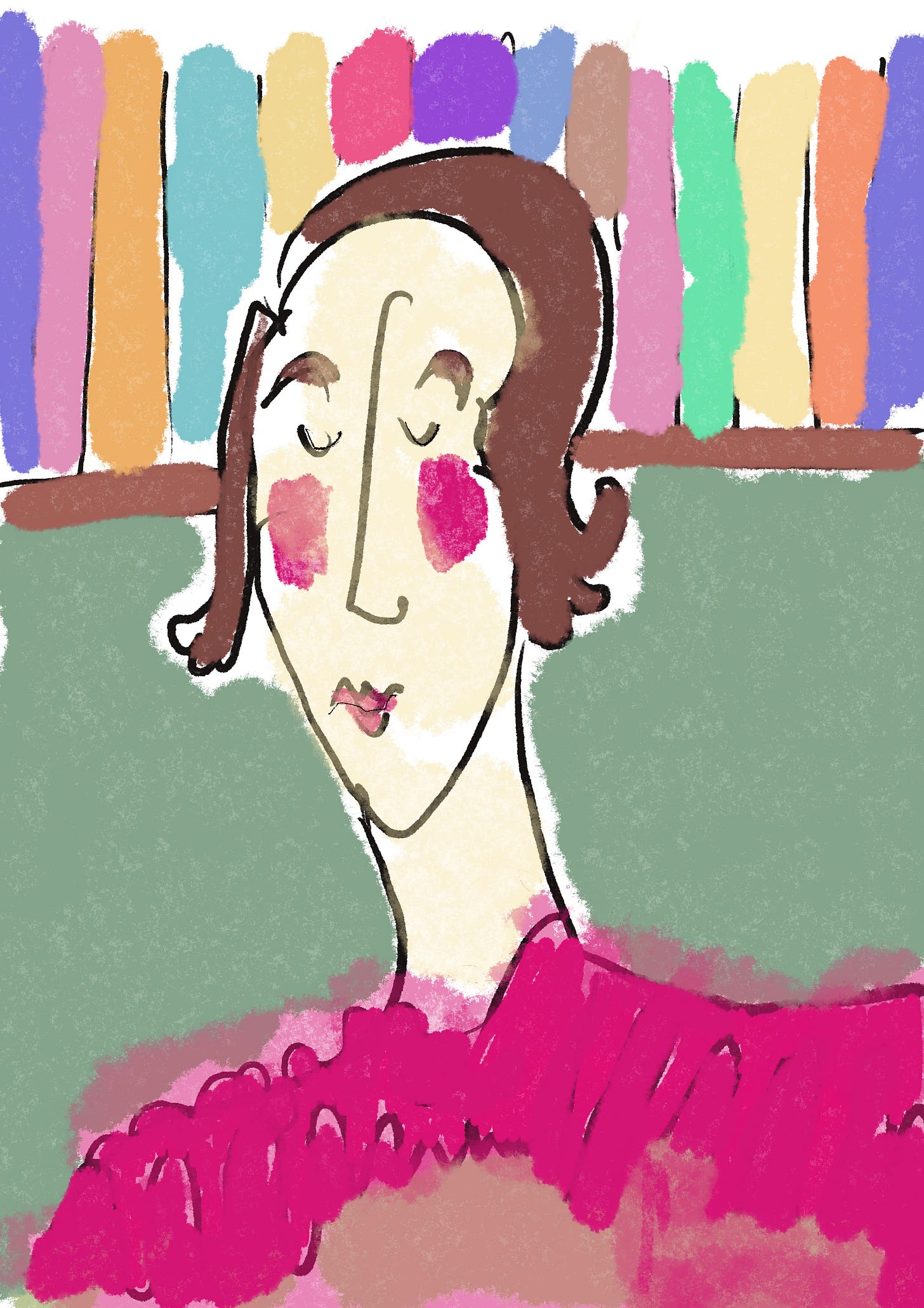Dear Friend,
I hope you have had a good week, and are having a successful rentrée, if that applies to you.
Last week I was asked to speak on the Times Radio breakfast show about Brigitte Macron’s appearance on Netflix hit ‘Emily in Paris’. There has been a lot of publicity about how French people dislike and mock the programme for presenting a fantasy version of Paris and French culture. The announcement that the First Lady would be making a cameo this week jarred for some, coming as it did just after President Macron finally named a prime minister after sixty days of delay.
One French current affairs magazine, Le Nouvel Obs, publish a scathing comment that drew parallels between the fantastical nature of the Netflix show and the modus operandi of Macronism.
FR: “Cela devait finir par arriver. Après trois saisons et demie passées à mettre en scène une capitale non pas fictive mais fantasmée, une ville débarrassée de toutes les scories pouvant salir les dorures supposées l’incarner, il fallait bien que ces deux mondes se rencontrent : celui de la série « Emily in Paris » et celui de la macronie.”
EN: “It was bound to happen eventually. After three and a half seasons spent displaying a capital that’s not fictional, but a fantasy — a city cleared of all detritus that might dirty the gilding supposed to embody it [the city], it was high time these two worlds met: the world of the series ‘Emily in Paris’ and the world of Macronism.”
Against the backdrop of a triumphant Olympic summer, the president’s reputation and credibility has taken a significant — by many accounts irreversible — hit over the past few months. Quite often now you will hear commentators, opponents and even former allies declare, “Macron est fini”.
The president’s eventual nomination of Michel Barnier — the conservative politician known in Britain as the lead negotiator for the EU during the Brexit process — is being framed by Macron’s camp as the appointment of a seasoned compromise-maker at a time when the parliament is divided and fractured.
The three main blocs comprise the Nouveau Front Populaire coalition on the left, which formed in reaction to the president’s call for a snap election; Macron’s own grouping of centrist politicians; and the Rassemblement National (RN) far-right representatives. Les Républicains, the centre-right party from which Barnier comes, came in fourth in this summer’s vote, winning only 46 seats outright, which raises questions about the legitimacy of his mandate as prime minister.
The Nouveau Front Populaire coalition — who gained the largest share of the parliamentary vote, though far from a majority — immediately declared the announcement a “scandale”, after having put forward their own compromise candidate, a relatively unknown economist and civil servant named Lucie Castets. NFP representatives have already made clear their intention to block the prime minister in parliament on the grounds that he ‘doesn’t have any political legitimacy’, and one of their key figures, leader of the Socialist Party Olivier Faure, described the decision as “democratic denial brought to its apogee.”
With the numbers so divided, Macron essentially had the choice of trying to form a coalition that pegged the centre to the left or to the right, and ultimately chose the right. This means the government will now most likely be reliant on the votes of Le Pen’s RN to pass legislation, and it is understood Barnier was chosen after she personally vetoed a number of other candidates from the centre-right or -left. She has still said that she has not made up their mind on supporting Barnier, and the RN may still decide to vote against his motions in parliament. It seems an odd way to end — with Le Pen as the decider — after the election was purportedly called to take the wind out the sails of the far right movement.
Political stalemate looks increasingly likely, which in turn could lead to the government using power ‘49.3’ to push through bills without a vote, as happened with the controversial retirement legislation in 2023.
Back in January, I wrote about Gabriel Attal, the now outgoing prime minister that President Macron had just appointed. Over his few months in power he proved relatively popular, with a high public profile during the snap election and then the Olympics.
Post-Olympics polling overall has shown that the vast majority of French people considered the event to be a success and admired the dedication and hard work of the athletes, considering the competitions to be a rare moment of national unity.
It’s hard to understand why the president chose to call an election so quickly, just weeks before the start of the Games. At the time, I compared the decision to David Cameron calling the Brexit vote. Much like that process, it is difficult to see what was gained from the endeavour: unlike the Olympics, it has not brought hope and clarity to the country, but rather set the stage for further tumult.

—
Enjoyable rentrée highlights
Autumn has begun in earnest here in Paris, or as I think of it in my head ‘Parisians-put-their-scarves-back-on season’. This also means a fresh slate of cultural happenings and exhibitions. Here’s some highlights for the next few weeks:
Musée des Arts Décoratifs, The birth of the Grands Magasins - until 13 October
Anyone who has been reading my letters closely for a while will know about my love for 19th-century French author, Emile Zola (or ‘Emmy-Z’ as I refer to him affectionately in my head). What I particularly appreciate about his interweaving Rougon-Macquart novels is the way each one explores a different aspect of historic Paris, and very often the themes are still relevant. One of the most famous of the series Au Bonheur des Dames takes place in one of Paris’s early grands magasins (department stores) — vast candy boxes of consumerism that invented the idea of shopping as leisure activity. This exhibition at the Musée des Arts Decoratifs (located in an annex of the Louvre) tells the story of these temples to consumption, putting them in their historical context of French expansionism and imperialism, and giving an idea of the sheer level of STUFF they sold via abundant displays.
Fun fact: The first of the grands magasins was called Le Bon Marché, meaning ‘good value’ because these shops were originally less expensive than everywhere else because they were able to buy in bulk. Today Le Bon Marché and the other grands magasins are some of the fanciest shopping spaces in Paris. I also only this week learned that the word ‘cheap’ in English comes from the Old English word ‘ceapian’, meaning market/trading , and ‘good cheap’ i.e. ‘good market’ i.e. ‘bon marché’ was used to mean good value, before it became just ‘cheap’.
—
Centre Pompidou, Surrealism, until 13 January 2025
From when I first started coming to Paris as a teenager, I was always enthralled by the brightly-coloured playful massiveness of the Pompidou Centre. With its visible piping and inescapable heft, it stands in contrast to just about everything else in this overall so elegant city, and even now I think of it as a kind of centre of gravity in central Paris. I am sad, therefore, that it will close its doors for FIVE WHOLE YEARS next year for renovations. This autumn/winter is therefore the time to visit while you still can. A huge Surrealism exhibition just opened, which I’m planning to visit asap. It features works from the titans of the genre like Salvador Dalí and Max Ernst, as well as women Surrealists like Leonora Carrington and Dora Maar who in recent years have rightfully started getting the recognition they deserve.
—
Musée Jacquemart-André, Masterpieces from the Borghese Gallery, until 5 January
This charming museum located in the 19th-century mansion of a wealthy bourgeois couple, avid art collectors, is one of Paris’s many excellent smaller galleries which, in almost any other town, would be considered one of the main highlights — but in Paris is just one of many endless highlights. It has just reopened after extensive renovations and this exhibition supplements the museum’s own impressive collection of Renaissance and Baroque works with loans from the famous Roman Borghese gallery. If you visit the exhibition, you can stroll in nearby Parc Monceau, one of the city’s most elegant parks, mostly frequented by locals.
Thirty-second book club
After reading The Underground Railroad by Colson Whitehead earlier this year, a masterfully written, emotional and gripping piece of slightly fantastical historical fiction, I have now just read another completely different book by him – Apex Hides The Hurt. Another genre and tone, it’s a comic, satirical novel that exposes the deeper wounds under the shining apex of American society, and in particular makes a dig at corporate culture and advertising – the main character is “a nomenclature consultant”, whose name we never learn, hired to decide the name of a fictional town. Whitehead was apparently inspired to write the novel after reading about the naming process for pharmaceutical products.
I’m straight on to a faster-paced, more character-focused (affectionate) critique of American life, set in bourgeois New York — the very successful Fleishman Is in Trouble by Taffy Brodesser-Akner.
Thank you for reading this pen friend letter about French political machinations, Parisian happenings and books.
VERY EXCITINGLY, next week’s letter will be the first in a series I am calling ‘Letter from a PFF (friend of Pen Friend)’. My former flatmate and dear friend
will be sharing her own reflections as a Dubliner who moved to Paris, and has now moved back home. She’s delightful, as is her writing.Have a great week until then!
Yours,
Hannah






